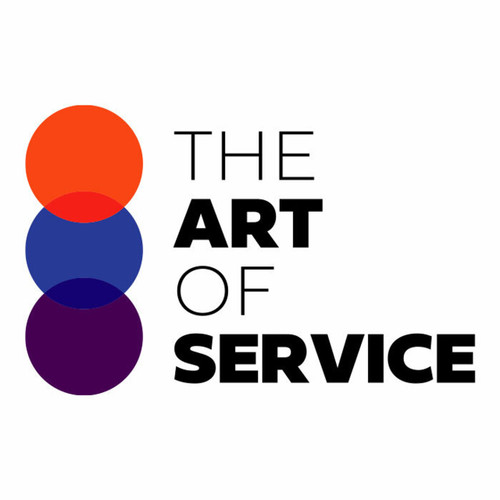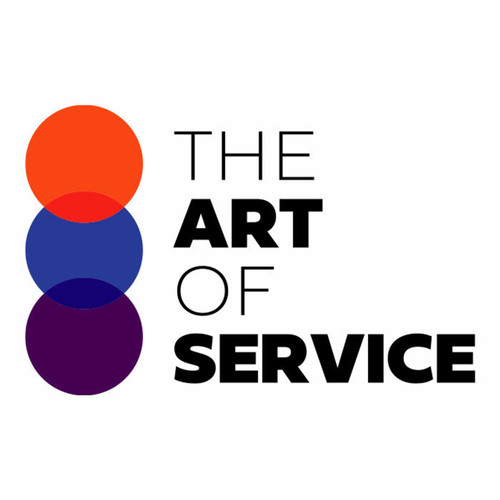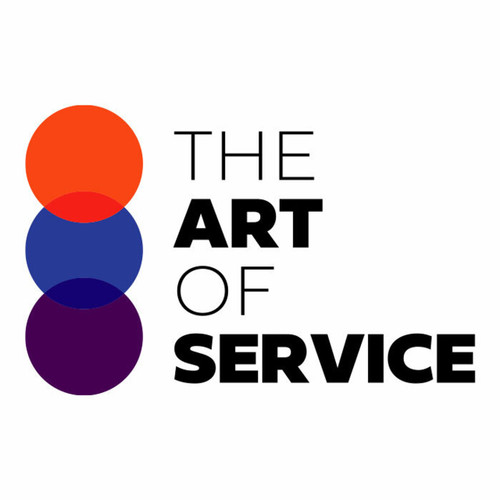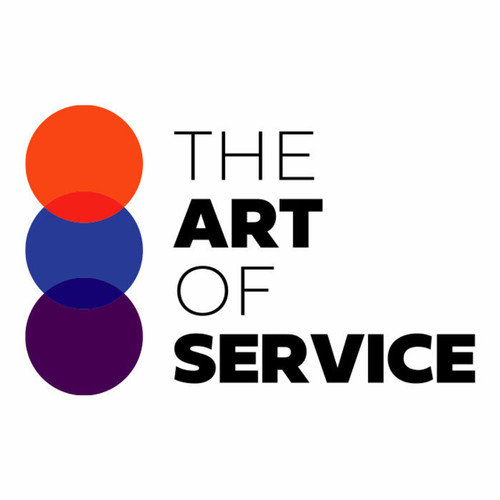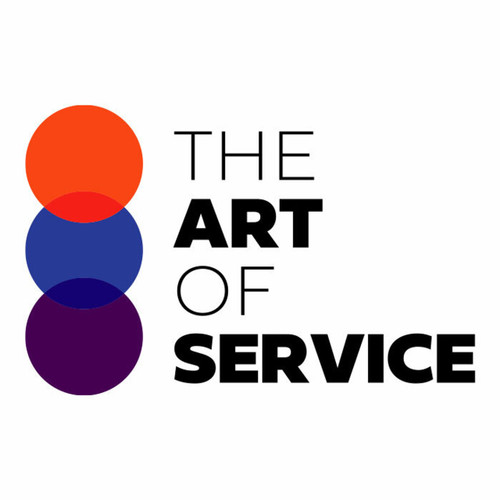With 1562 prioritized requirements, solutions, benefits, results, and real-life examples, this dataset is the ultimate resource for any business looking to safeguard their operations.
But what sets us apart from our competitors and alternatives? Our comprehensive dataset is specifically designed for professionals like you, making it easier to understand and implement compared to generic resources.
It covers every aspect from urgency to scope, ensuring that you are fully equipped to handle any situation that may arise.
Our product type is user-friendly and can be easily navigated by anyone, even those without a technical background.
Plus, as a more affordable DIY alternative, you can access all this valuable information at a fraction of the cost of hiring expensive consultants.
Still not convinced? Let′s talk about the benefits of using our Risk Mitigation and Seven Tiers of Disaster Recovery Knowledge Base.
Not only will you be able to identify potential risks and create effective solutions, but you′ll also be able to minimize downtime, reduce costs, and protect your business′s reputation.
Our dataset is the result of extensive research and analysis, so you can trust that it provides the most up-to-date and reliable information available.
Don′t just take our word for it, countless businesses have already seen the positive impact our Risk Mitigation and Seven Tiers of Disaster Recovery Knowledge Base has had on their operations.
With our easy-to-use dataset, you′ll have the confidence and peace of mind knowing that your business is prepared for any risk or disaster that may come your way.
So why wait? Invest in our Risk Mitigation and Seven Tiers of Disaster Recovery Knowledge Base today and see the difference it can make for your business.
With affordable pricing, detailed product specifications, and comprehensive coverage, it′s the best choice for any business serious about protecting their operations.
Don′t leave your risk mitigation and disaster recovery efforts to chance - trust in our dataset to give you the necessary tools and knowledge to effectively manage any potential risks.
Try it now and experience the benefits for yourself!
Discover Insights, Make Informed Decisions, and Stay Ahead of the Curve:
Key Features:
Comprehensive set of 1562 prioritized Risk Mitigation requirements. - Extensive coverage of 98 Risk Mitigation topic scopes.
- In-depth analysis of 98 Risk Mitigation step-by-step solutions, benefits, BHAGs.
- Detailed examination of 98 Risk Mitigation case studies and use cases.
- Digital download upon purchase.
- Enjoy lifetime document updates included with your purchase.
- Benefit from a fully editable and customizable Excel format.
- Trusted and utilized by over 10,000 organizations.
- Covering: Edge Computing, Plan Distribution, Recovery of Investment, Third Party Management, Data Center Consolidation, Plan Exercise, Plan Maintenance, Data Replication, Service Level Objectives, Internet Of Things, Continuous Data Protection, Hot Site, Configuration Management, Alternate Workspace, Data Backup, Recovery Automation, Cooling Redundancy, Plan Review, Tabletop Exercises, Network Redundancy, Data Mirroring, Plan Training, Software Redundancy, Reporting Tools, Data Center Recovery, Risk Acceptance, Cost Benefit Analysis, Risk Mitigation, Hardware Redundancy, Recovery Strategy, Business Continuity Planning, Value Of Information, Risk Transference, Network Recovery, Regulatory Compliance, Recovery Teams, Mobile Recovery Site, Disaster Recovery As Service, Seven Tiers of Disaster Recovery, Hardware Recovery, Infrastructure Recovery, Testing Tools, Database Recovery, Access Control, Application Recovery, Disaster Recovery Site, Service Level Agreement, Disaster Recovery Documentation, Cold Site, Cloud Backup, Change Management, Power Redundancy, Software Recovery, Warm Site, Monitoring Tools, Hybrid Disaster Recovery, Artificial Intelligence, Cloud Based Disaster Recovery, System Images, Security Audits, Vendor Management, Key Performance Indicators, Total Cost Of Ownership, Work Area Recovery, Supply Chain Continuity, Recovery Time Objective, Department Recovery, Incident Management, Recovery Point Objective, Communication Plan, Maximum Tolerable Period Of Disruption, Disaster Recovery Policy, Plan Testing, Plan Update, Managed Disaster Recovery, Risk Avoidance, IT Disaster Recovery, Intrusion Detection, Emergency Response Plan, Recovery of Losses, Offsite Storage, Business Impact Analysis Tools, Employee Training, Return On Investment, Disaster Recovery Plans, Business Resumption, Vulnerability Scanning, Post Disaster Review, Penetration Testing, Plan Awareness, Risk Assessment Tools, Orchestration Tools, Plan Implementation, Data Privacy, Business Impact Analysis, Simulation Tests, Mutual Aid Agreement, Disaster Recovery Planning Software
Risk Mitigation Assessment Dataset - Utilization, Solutions, Advantages, BHAG (Big Hairy Audacious Goal):
Risk Mitigation
Cyber risk exposure can be measured through quantitative methods, like financial loss estimation, or qualitative methods, like risk assessment matrices. Both help organizations understand and express their cyber risk level.
Solution: Implement a risk assessment process utilizing tools like FAIR or NIST.
Benefit: Provides a standardized, data-driven approach to identify and quantify cyber risks.
Solution: Establish a risk appetite statement and communicate it across the organization.
Benefit: Ensures alignment of risk tolerance and promotes informed decision-making.
Solution: Regularly review and update risk mitigation strategies based on changing threats.
Benefit: Keeps the organization agile and adaptive to evolving cyber risks.
Solution: Integrate cyber risk metrics in business performance indicators.
Benefit: Encourages risk-aware culture and informed decision-making at all levels.
CONTROL QUESTION: How does the organization measure or express its cyber risk exposure?
Big Hairy Audacious Goal (BHAG) for 10 years from now: A big hairy audacious goal (BHAG) for risk mitigation in 10 years could be for the organization to have a comprehensive and real-time understanding of its cyber risk exposure, measured and expressed through a single, standardized risk metric that is widely understood and accepted by stakeholders.
To achieve this goal, the organization could focus on the following areas:
1. Implementing a robust and integrated risk management framework that covers all aspects of cyber risk, including threat intelligence, vulnerability management, security controls, incident response, and recovery.
2. Developing and deploying advanced analytics and machine learning capabilities to continuously monitor and analyze cyber risks, and to provide real-time visibility into the organization′s risk posture.
3. Establishing a common vocabulary and taxonomy for cyber risk, and developing standardized methods for measuring and expressing risk exposure.
4. Building a culture of risk awareness and accountability throughout the organization, with clear roles and responsibilities for risk management.
5. Engaging with industry peers, regulators, and other stakeholders to promote the adoption of common risk management practices and standards.
By focusing on these areas, the organization can work towards a BHAG of having a comprehensive and standardized view of its cyber risk exposure, which will enable it to make more informed decisions about risk management, allocate resources more effectively, and better protect its assets and reputation.
Customer Testimonials:
"This dataset has simplified my decision-making process. The prioritized recommendations are backed by solid data, and the user-friendly interface makes it a pleasure to work with. Highly recommended!"
"I used this dataset to personalize my e-commerce website, and the results have been fantastic! Conversion rates have skyrocketed, and customer satisfaction is through the roof."
"Kudos to the creators of this dataset! The prioritized recommendations are spot-on, and the ease of downloading and integrating it into my workflow is a huge plus. Five stars!"
Risk Mitigation Case Study/Use Case example - How to use:
Synopsis of Client SituationA mid-sized financial services organization with $10 billion in assets under management (AUM) is seeking to measure and express its cyber risk exposure. The organization has experienced several low-level cyber attacks in the past two years, including phishing scams and data breaches. However, the organization′s leadership team acknowledges that they do not have the expertise or resources to quantify the impact of these attacks accurately. The organization seeks to implement a risk mitigation strategy that aligns with industry best practices and regulatory requirements.
Consulting Methodology
To measure and express the organization′s cyber risk exposure, a consulting firm proposed a four-step methodology:
1. Develop a cyber risk taxonomy: The consulting firm collaborated with the organization′s IT and risk management teams to develop a taxonomy of cyber risks that aligned with the NIST Cybersecurity Framework. The taxonomy included threats, vulnerabilities, and impacts.
2. Quantify the likelihood and impact of risks: The consulting firm applied quantitative and qualitative methods to estimate the likelihood and impact of each risk. For example, they used historical data on similar attacks and industry benchmarks to estimate the probability of a data breach. They also estimated the financial and reputational impact of each risk using the organization′s financial statements and industry benchmarks.
3. Assess the organization′s cybersecurity posture: The consulting firm evaluated the organization′s cybersecurity controls and processes using industry frameworks and standards. They identified gaps in the organization′s defenses and recommended improvements.
4. Develop a risk mitigation strategy: Based on the taxonomy, quantification, and assessment, the consulting firm developed a risk mitigation strategy that prioritized the most significant risks and aligned with the organization′s risk appetite.
Deliverables
The consulting firm delivered the following:
1. Cyber risk taxonomy and heatmap: A visual representation of the cyber risks, prioritized by likelihood and impact.
2. Quantitative and qualitative risk assessments: A detailed report on the likelihood and impact of each risk, including the methodology and assumptions.
3. Cybersecurity assessment report: A comprehensive evaluation of the organization′s cybersecurity posture, including gaps and recommendations.
4. Risk mitigation strategy: A prioritized plan to address the most significant risks, with metrics and timelines.
Implementation Challenges
The organization faced several challenges in implementing the risk mitigation strategy, including:
1. Resource constraints: The organization had limited resources and expertise to implement the recommendations, particularly in the areas of IT and risk management.
2. Regulatory compliance: The organization needed to balance the risk mitigation strategy with regulatory requirements, such as the General Data Protection Regulation (GDPR) and the New York Department of Financial Services (NYDFS) Cybersecurity Regulation.
3. Cultural change: The organization′s leadership team needed to prioritize cybersecurity and allocate resources accordingly, which required a cultural shift toward risk management.
4. Data privacy: The organization needed to protect sensitive data while also enabling data-driven insights and analytics.
KPIs and Management Considerations
The consulting firm suggested the following KPIs to measure the effectiveness of the risk mitigation strategy:
1. Reduction in the number of cyber incidents: The organization should track the number of cyber incidents over time and aim to reduce them.
2. Improvement in cybersecurity maturity: The organization should assess its cybersecurity maturity using frameworks such as the NIST Cybersecurity Framework and aim to improve its score over time.
3. Reduction in downtime and data loss: The organization should track the duration and impact of cyber incidents, such as downtime and data loss, and aim to reduce them.
4. Compliance with regulatory requirements: The organization should track its compliance with regulatory requirements and aim to maintain or improve its compliance score.
In addition to the KPIs, the organization should consider the following management considerations:
1. Risk appetite: The organization should define its risk appetite and ensure that the risk mitigation strategy aligns with it.
2. Communication: The organization should communicate the risk mitigation strategy and its progress to all stakeholders, including employees, customers, and regulators.
3. Continuous improvement: The organization should continuously monitor and improve its risk mitigation strategy, incorporating new threats and best practices.
Sources:
* Measuring and Expressing Cybersecurity Risk to Boards of Directors, National Association of Corporate Directors, 2018.
* Cybersecurity: Assessing, Measuring, and Managing Risk, Deloitte, 2019.
* Measuring and Managing Cybersecurity Risk, Harvard Business Review, 2021.
* The Cybersecurity Canon: Measuring and Managing Information Risk: A FAIR Approach, ISACA, 2020.
* Cyber Risk Quantification: A Practitioner′s Guide, Cyentia Institute, 2021.
* The Future of Cybersecurity: The Role of Boards and CEOs in Risk Oversight, KPMG, 2020.
Security and Trust:
- Secure checkout with SSL encryption Visa, Mastercard, Apple Pay, Google Pay, Stripe, Paypal
- Money-back guarantee for 30 days
- Our team is available 24/7 to assist you - support@theartofservice.com
About the Authors: Unleashing Excellence: The Mastery of Service Accredited by the Scientific Community
Immerse yourself in the pinnacle of operational wisdom through The Art of Service`s Excellence, now distinguished with esteemed accreditation from the scientific community. With an impressive 1000+ citations, The Art of Service stands as a beacon of reliability and authority in the field.Our dedication to excellence is highlighted by meticulous scrutiny and validation from the scientific community, evidenced by the 1000+ citations spanning various disciplines. Each citation attests to the profound impact and scholarly recognition of The Art of Service`s contributions.
Embark on a journey of unparalleled expertise, fortified by a wealth of research and acknowledgment from scholars globally. Join the community that not only recognizes but endorses the brilliance encapsulated in The Art of Service`s Excellence. Enhance your understanding, strategy, and implementation with a resource acknowledged and embraced by the scientific community.
Embrace excellence. Embrace The Art of Service.
Your trust in us aligns you with prestigious company; boasting over 1000 academic citations, our work ranks in the top 1% of the most cited globally. Explore our scholarly contributions at: https://scholar.google.com/scholar?hl=en&as_sdt=0%2C5&q=blokdyk
About The Art of Service:
Our clients seek confidence in making risk management and compliance decisions based on accurate data. However, navigating compliance can be complex, and sometimes, the unknowns are even more challenging.
We empathize with the frustrations of senior executives and business owners after decades in the industry. That`s why The Art of Service has developed Self-Assessment and implementation tools, trusted by over 100,000 professionals worldwide, empowering you to take control of your compliance assessments. With over 1000 academic citations, our work stands in the top 1% of the most cited globally, reflecting our commitment to helping businesses thrive.
Founders:
Gerard Blokdyk
LinkedIn: https://www.linkedin.com/in/gerardblokdijk/
Ivanka Menken
LinkedIn: https://www.linkedin.com/in/ivankamenken/



